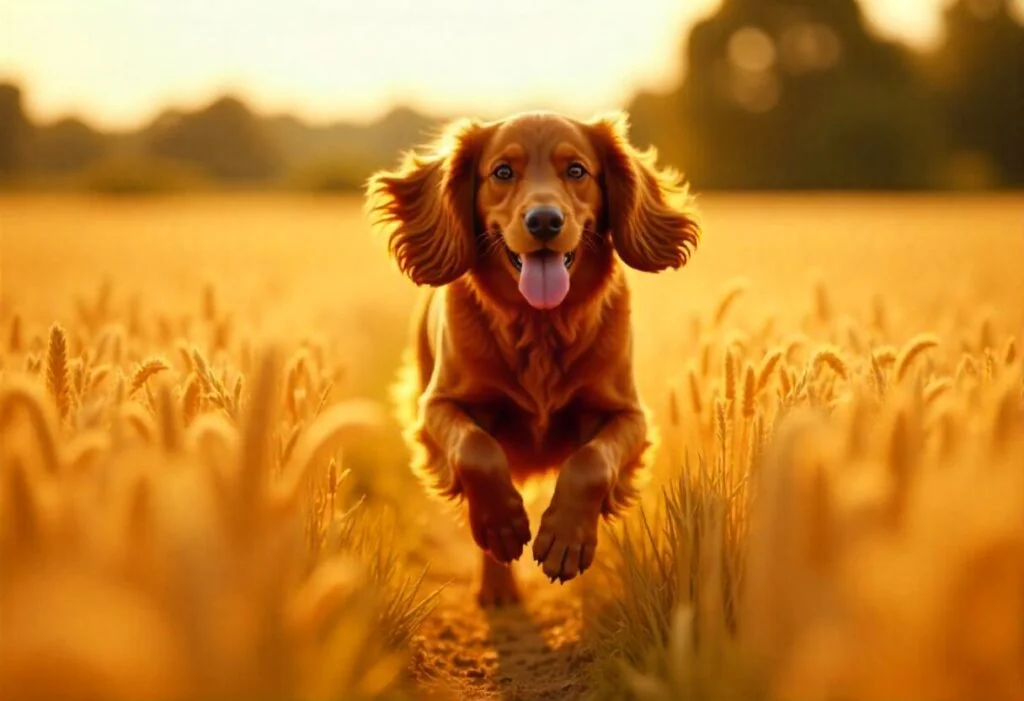Introduction

The breed of Sussex Spaniel is one that should be studied when one wants to find a dog that is good-looking, affectionate, and possesses a rich history. Having its unusual characteristic of a golden liver coat, expressive eyes, and a tiny body, this rare spaniel has been stealing the hearts of its dog lovers throughout the ages. Sussex Spaniels were originally raised as experienced hunting dogs in the English countryside, but they have preserved their industrious origins to become loving and loyal companions of their owners.
The Origins of Sussex Spaniels
The Sussex Spaniel is a breed of dog with a fascinating past of life in the English countryside. The breed of these dogs was raised in Sussex in England, and are said to be good hunting companions; they have nothing in them better than to run the game out of heavy undergrowth. The rocky terrain enabled them to labor very well with their sturdy and low figure, and their strong sense of smell enabled them to be good trackers.
The fact that Sussex Spaniels have a very rich history makes them have a special charm, having an obedient, patient, and faithful character. This historical context has an effect not just on their level of work ethic, but also on their soft, predictable temperament, which also predisposes them to living just as effectively as pets do, in the family.
1. A Distinctive Appearance That Captivates
The Sussex Spaniels are boldly distinctive so that one can readily recognize them. They are small with a low-set body, with a long body and powerful legs. Their golden liver coat is thick, wavy, and shiny, further to their traditional spaniel grace. The eyes are expressive and soulful, and they complete their appealing appearance, which, in most cases, softens the hearts of all around.
Sussex Spaniels have a characteristic figure as compared to other breeds of spaniels because they are shorter and sturdier than other spaniels. In contrast to the more energetic and taller English Springer Spaniel or the Cocker Spaniel, Sussex Spaniels possess an aura of calm with every easy step size, so that with their looks, they are as much a personality as they represent one.
Check Out: Why the Irish Red and White Setter Stands Out: 6 Stunning Qualities You’ll Love.
2. Gentle and Affectionate Temperament
Another very endearing hatred is that Sussex Spaniels are extremely affectionate and are not malevolent. These are dogs that are loving and gentle and highly attached to their families. They are extremely fun-loving and easy-going going and this makes them an excellent pet in houses with children, seniors, or any other pets.
They especially relate well with children as they are extremely playful, and on the other hand, they are cautious. The Sussex Spaniels are outgoing and in no sense noisy, and would only play safely and enjoy themselves.
3. Natural Hunters with a Keen Nose

The Sussex Spaniel has inherited the great instinct of hunting of its ancestors, the working dogs. They are wild hunters with a strong sense of smell and amazing tracking capacity, which makes them good companions during outdoor activities and games on scents.
These instincts are still present even when they are family pets, and hence they like mentally challenging games like following hidden toys or engaging in fun games of hunting in the backyard. Their steady tempered character enables them to match energy with concentration, which enables them to be energetic and calm at the same time in life.
All these qualities make the Sussex Spaniel popular among active families and people who like outdoor activities since the dogs can be involved in long walks, hikes, fun outdoor activities, and still keep their attentive and mildly endearing attitudes.
4. Working with Sussex Spaniels
Sussex Spaniards are intelligent and good students, despite being calm and relaxed. They respond to training and more so by the use of positive reinforcement strategies such as treats, praise, and play. Serious punishment is not very effective and can bring shyness on their part.
Sussex Spaniels respond well to simple commands (or can be trained to sit, stay, come, and heel), and they need and love to learn tricks and games involving scents. The fact that they are intelligent, and their calm will allows them to adjust to family-related life and to light working activities makes them versatile pets that can keep their minds busy and satisfied.
5. What Owners Should Know
Even being rather healthy, there are certain breed-specific diseases that potential, Sussex Spaniels could be predisposed to. The main issues that can be addressed with proper care and concern include hip dysplasia, ear infections, and obesity. They are dying between 11 to 13 years, therefore a lifetime partner to the faithful families.
They regard their health seriously, and it is possible to take care of it by conducting routine checkups with the animals, having a good diet, and exercising. They are short and tall, thus tough dogs; however, weight management is the thing so that they are not strained in terms of weight and stress on the joints, hence staying healthy.
6. Grooming and Care Tips

The coat that is put on Sussex Spaniels is thick and wavy, and thus needs constant grooming to remain healthy and clean. Washing 2–3 times a week helps to eliminate the entangles, loosen hair, and make their coats shiny. Bathing must be rare and with soft dog shampoo in order to cover their skin.
Additional significant care details are:
- Ear care: The swollen ears should be frequently checked and cleaned to avoid infections.
- Nail clipping: Nails should be trimmed so as not to cause pain or arthritis.
- Dental care: Oral care can be ensured by brushing regularly.
These dogs can be kept comfortable, healthy, and presentable with proper attention and grooming, and also cause less shedding around the house.
Conclusion
The Sussex Spaniel is an odd amalgamation of the attractive, cute, and trustworthy. These dogs are so special, not simply due to their beauty, love-making instincts, hunting instincts, and the fact that they are trainable. They are the pets of the children and the old people among other individuals, since they are not aggressive, they are good in character, and also they are attached to their families.
For more info: Click Here.
FAQs
1. How much exercise does this dog need on a daily basis?
Sussex Spaniels need moderate things to do on a daily basis wh which include walking, playing games, and outdoor activities. They are healthy, happier, and their mind are constantly active because of approximately 45-60 minutes of exercise per day.
2. And that does this dog need in the way of grooming?
They possess a sort of hair that is both thick and wavy, and is not expected to be twisted and shiny, but brushed 2-3 times per week. They must also be neat, and hence they can be washed in the ear, nails trimmed, and in certain instances, have a bath so that they feel well and healthy.
3. Are these dogs easy to train?
Sussex Spaniels are bright and desire to please, and therefore can be easily adapted to positive reinforcement measures, including treats, praise, and play. They are taught the commands through gentle training on a regular basis, and this is the manner in which they are taught to adopt good manners.
4. Do these dogs cohabit with other pets?
Yes. As a rule, the Sussex Spaniards are light-hearted and outgoing and tend to be friendly to other pets and dogs in the home. The early socialization also assists in making sure that they will be capable of fitting in to the homes of multiple pets.
5. Do Sussex Spaniards get on well with children?
Yes! Sussex Spaniards are also loving, patient, and gregarious; they therefore befriend children well. They also play around, but they are not too energetic to the extent that the interactions with the kids of any age may be damaging to them.





